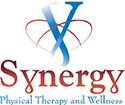What is Dry Needling?
Intramusuclar Trigger Point Release (also termed dry needling) is a successful medical treatment which uses very thin needles without medication to release muscle tension associated with taught bands of irritated muscle tissue. Here’s how it works:
- Used as part of an overall rehabilitative treatment plan to treat pain and dysfunction caused by nerve and muscular problems, overuse injuries, and tendonitis
- Works by changing the way your body senses pain, and by helping the body heal stubborn trigger points
- Effectively treats muscle pain from trigger points, tight muscles that limit motion, and referred pain that is felt in a different location of the body
- The healing process is boosted by the electrical and chemical effects during treatment
Who can do this?
Performing this technique requires both clinical expertise and specialization training. Dr. Cara Ogren and several of the Physical Therapists within our clinic perform this treatment option and are involved in ongoing training for this specialty. Participating with the Dry Needling Institute allows Synergy to have access to the clinical expertise of world renown specialists in our field, clinical resources of Ohio University, and share knowledge with a wide network of other physical therapists across the globe. Physical Therapist Assistants, while valuable to many treatment methods utilized in many treatment sessions, are not qualified to perform this specific treatment. Select chiropractors and orthopedic specialists have training in dry needling, although are unable to perform the necessary muscle retraining that makes this treatment effective for long term pain relief.
Is there any pain?
Your therapist has been specifically trained in the various needling techniques, and will choose the length of the needle based on your condition and body size. You will feel a small pinprick with the insertion of the needle, followed by a muscle ache or twitch. These are normal and good sensations, which mean that you will experience relief from your symptoms. Most patients experience immediate relief from trigger point pain, while others can feel a few hours of soreness in the muscle before they feel relief.
Acupuncture versus Dry Needling…
Acupuncture uses chakras to achieve a therapeutic effect whereas the location of trigger points determines the placement of the treatment in dry needling.
Injections versus Dry Needling…
The process of injecting an analgesic medication like Lidocane or anti-inflammatory like Cortisone into a muscle is called wet needling. The process of dry needling does not use medication, and therefor, does not require a large needle. According to the research, the therapeutic effects of these two techniques are the same.
Is it covered by insurance?
If you have insurance that covers physical therapy treatment, it will cover this treatment. It is billed through the manual therapy code, which falls under the umbrella of covered services by Medicare and private insurance providers. We also have a self-pay structure to allow patients to continue with dry needling treatments with myofascial release treatments after their discharge from physical therapy.
How do I get more information?
During your physical therapy evaluation, your therapist can explain how your specific condition may benefit from using this treatment technique. For more information, you can also access the DNI at www.thedryneedlinginstitute.net.

